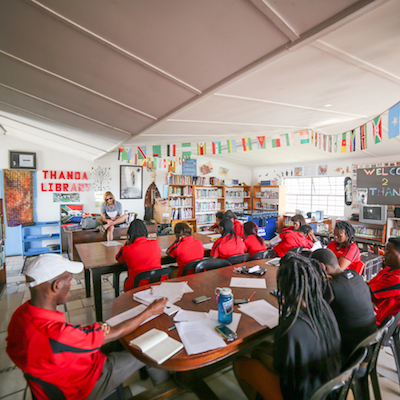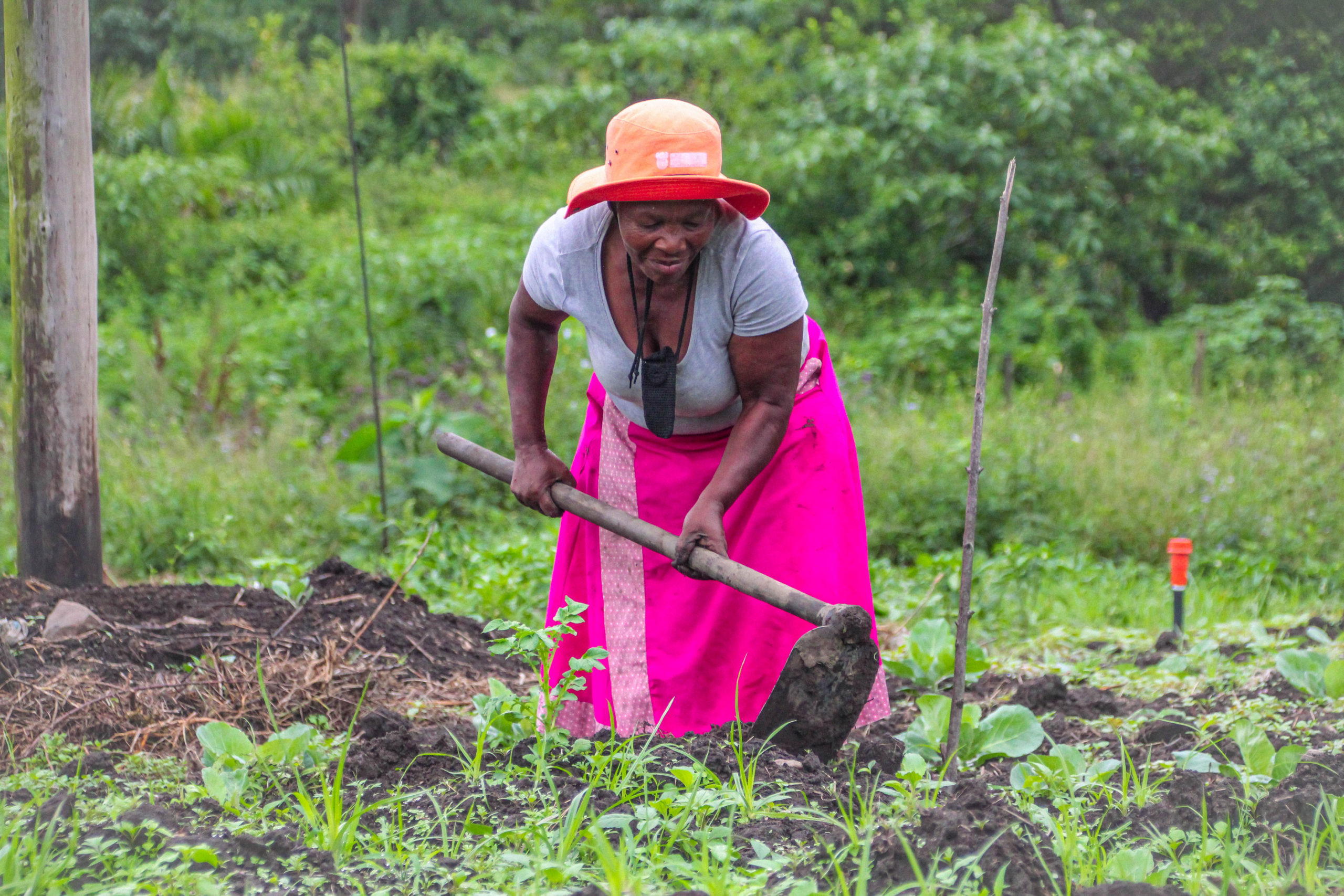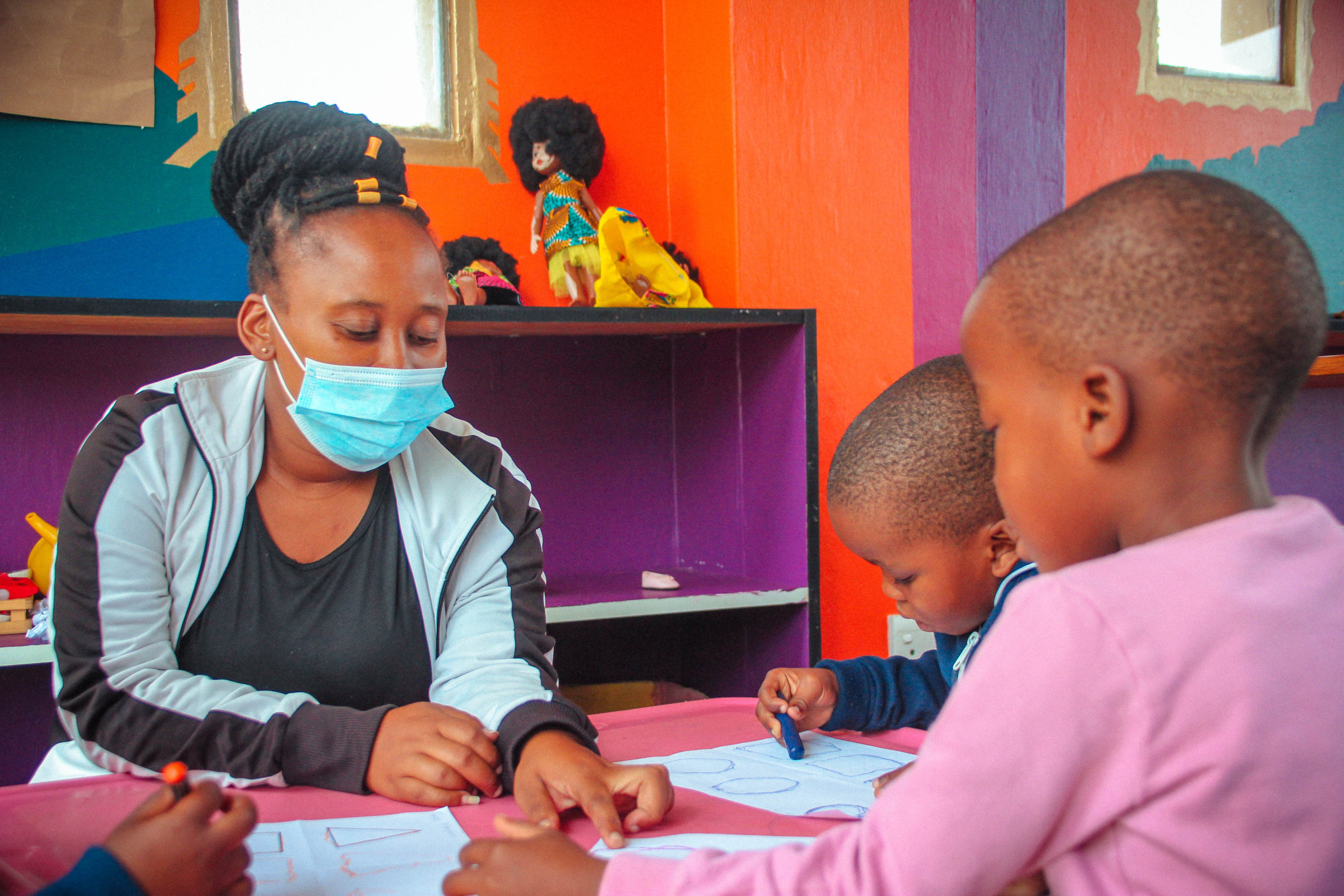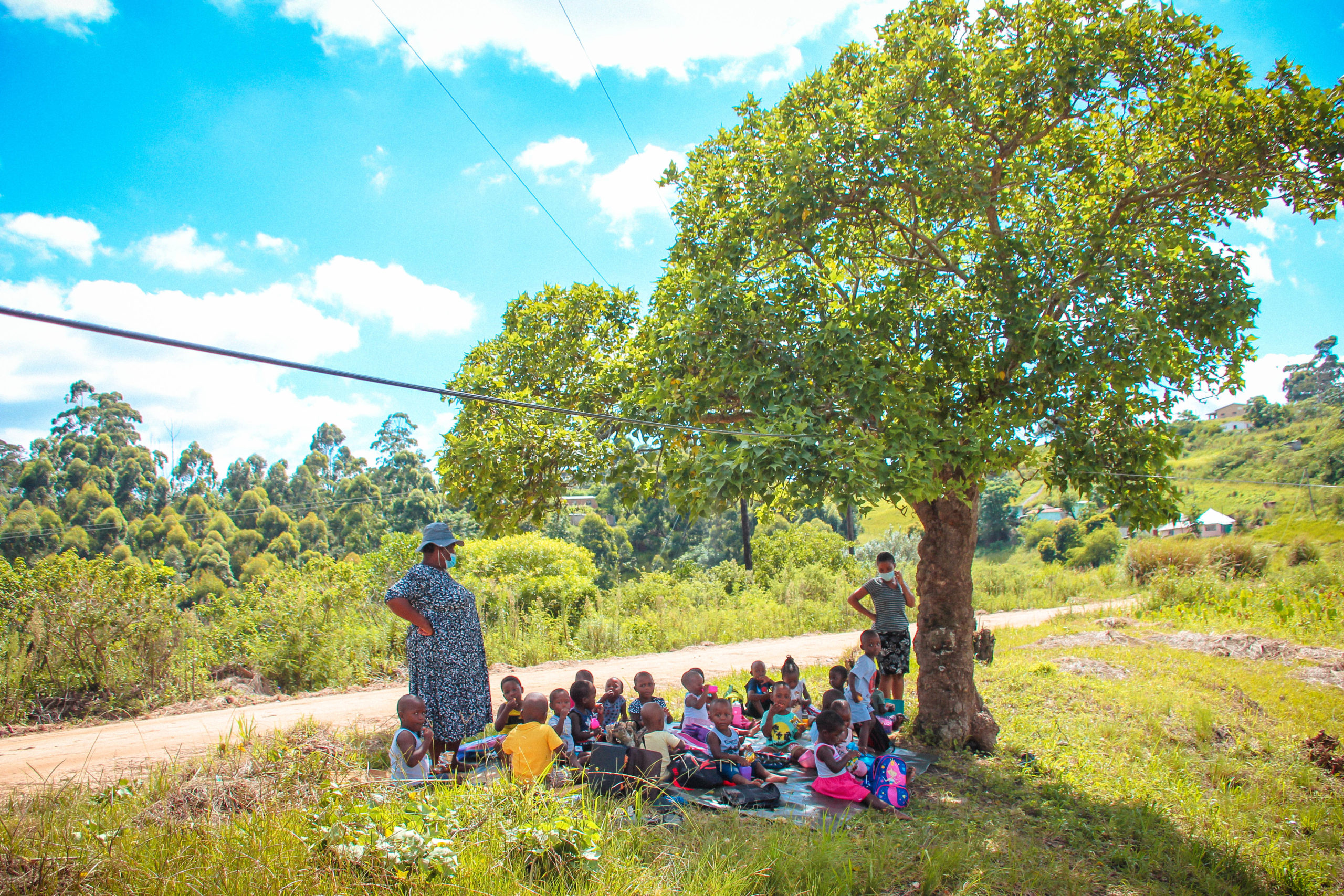On February 14th, 1990, the Voyager 1 space probe reached 6,054,587,000 kilometres from Earth, completing its record-breaking mission as a part of the Family Portrait photo series of our solar system. It was then that scientist, Carl Sagan, pleaded with NASA officials to turn the camera around to take one last photo, this time of earth. The imaging team had not programmed the camera to withstand light looking in the opposite direction, but Sagan reasoned that the image would have a lasting impact on humanity and the perspective of our place in the universe. The photo became widely known as the Pale Blue Dot, a 0.12 pixels in size, grainy speck amongst the vast space of our solar system (www.planetary.org).
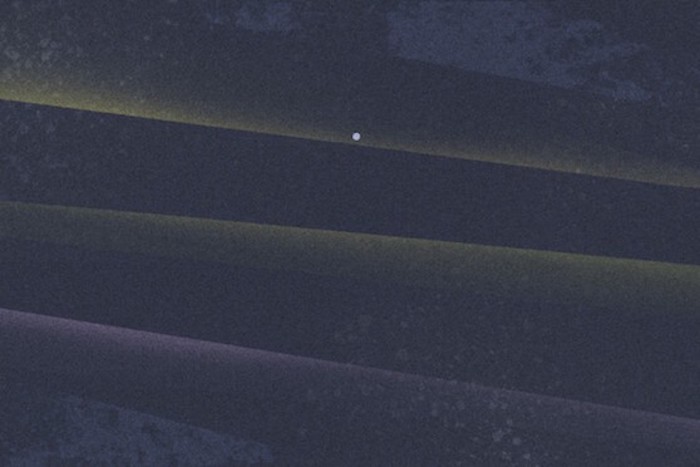
“Why do you think Carl Sagan took this picture and what did he want people to get from it?” asked education director, Tyler Howard, during an on-going training session with Thanda Facilitators.
At Thanda, we see learning as a process that never ends. As you enter the Art Centre, a quote from Jiddu Krishnamurti is displayed at eye-level, “There is no end to education. It is not that you read a book, pass an examination, and finish with education. The whole of life, from the moment you are born, to the moment you die, is a process of learning.” Thanda Facilitators undergo a training process that includes extensive initial trainings in relation to our Creative Learning Curriculum (CLC) before facilitating a class and subsequently receive on-going trainings to aid with creative development, personal growth, lesson planning, and collaboration with one another. The training reflects the development children go through in class, but at a much higher level.
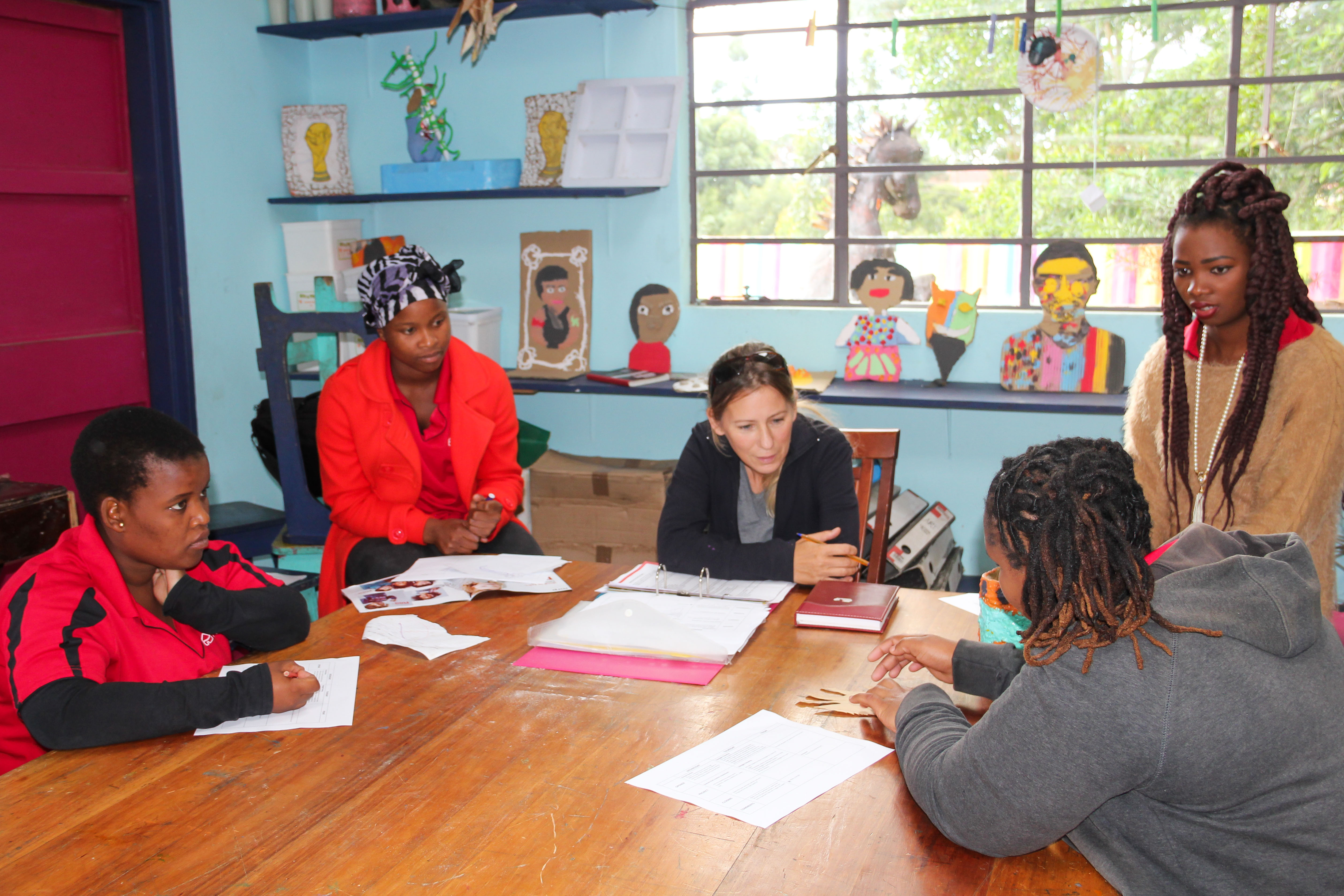
Creativity is the unfolding of two processes: thinking (imagining), and then producing (creating). It is the key to understanding and facilitating Thanda’s Creative Learning Curriculum. In order to teach the curriculum effectively, we must first understand the role creativity plays in all of our lives, as a part of everything. A 2012 Adobe study on creativity shows that 7 in 10 of respondents feel creativity is valuable to society, however only 1 in 4 people believe they are living up to their own creative potential. When asked about creativity, Thanda facilitator Janet responded, “Before I did not think I was creative, but now I am able to draw and use colors and realized I am actually good at this. I am seeing the creative side of me that can think critically, be confident and transfer these skills to the children.” The subjects and activities in our CLC extend, but are not limited to, science experiments, global perspectives, history, ecology, optical illusions, song lyrics, and art. We learn to be creative in facilitator training through exploration, questioning assumptions, making connections, using our imagination and producing something new. By going through the same educational process they will take the children through, the facilitators are better equipped to pass these skills onto the children.
In all things at Thanda, we prioritise a holistic environment where personal growth is at the forefront of each day. Every Wednesday, a yoga class is held at the Community Centre for staff to look inward on the mind and the body. The Facilitators also receive training from other NGOs covering topics such as child psychology, recycled art, training in disabilities, and counseling. Lyrics from musicians like Kanye West, Nas, or Pink Floyd spark debate and help us to ask questions about the world, letting go of preconceived notions. Covering such in-depth and emotional topics normally would be difficult, however Thanda facilitator Banele says that “with this team there hasn’t been anything too difficult to discuss.” Many of the other facilitators describe a familial feeling toward the group because it is supportive and fun. Collaboration is also an important part of training sessions because it sparks confidence, growth, and empathy. When asked what the most surprising and eye-opening session was, Banele responded that sewing re-usable menstrual pads was very different. “I didn’t know there are children who miss school because they are on their periods and cannot afford pads.” The pattern will be sewn by all students in the higher grades next month.

Carl Sagan’s intentions for photographing the earth from 6 billion kilometres away were not for scientific value, but for human perspective in order to evaluate and reflect on our place in the universe. While seeing the Earth as a whole diminishes the seeming-importance of divisions such as national boundaries, he said, it also “underscores our responsibility to deal more kindly with one another, and to preserve and cherish the pale blue dot, the only home we’ve ever known.” Our approach to education is not traditional by any means. Like Carl Sagan’s suggestion for the Pale Blue Dot, it is unconventional, brave, and most of all creative.
Voyager 1 is still traveling at 64,000 km/h and is the farthest man-made object from earth. Its mission has been extended and continues to this day, with the aim of investigating the boundaries of our solar system. Operating for 39 years, 9 months and 27 days, as of today.


